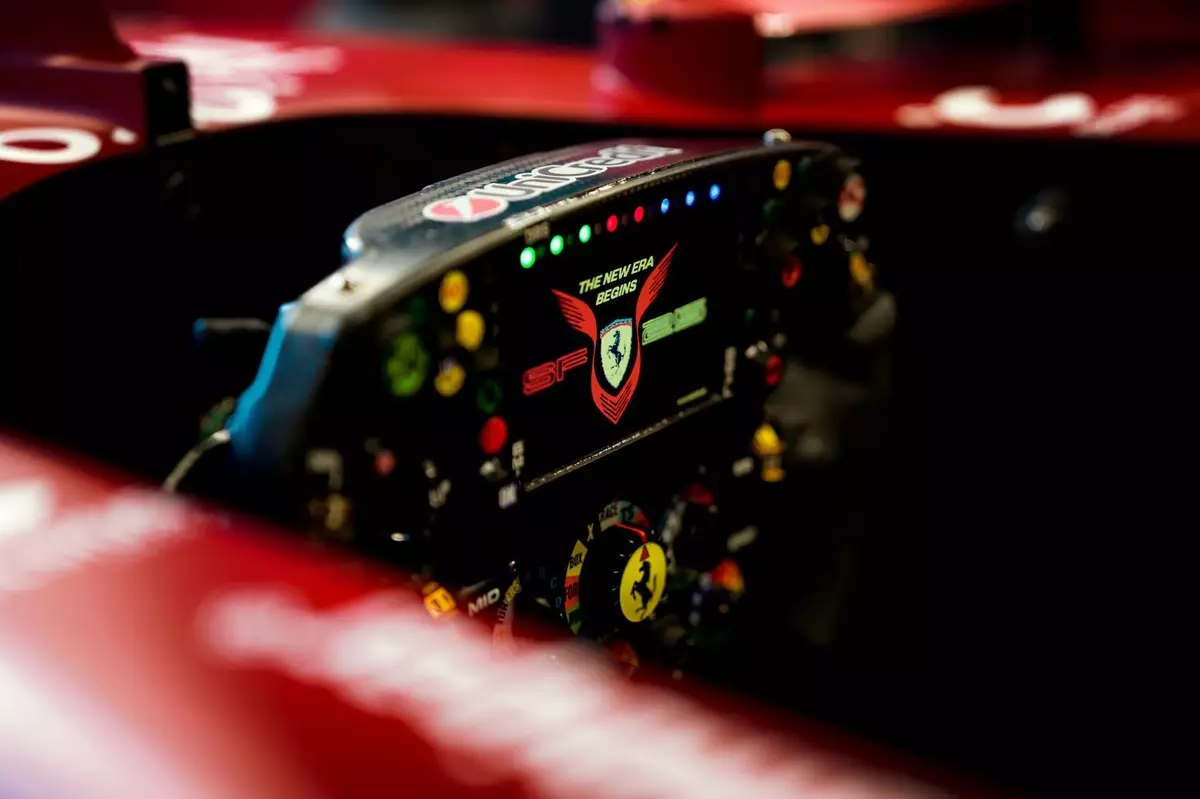Lewis Hamilton’s transition to Ferrari heralds a transformative chapter in his illustrious Formula 1 career. While initial outings in Australia and China revealed some hiccups, Hamilton’s acquisition of his first sprint pole and victory in Shanghai offers promise and hope. These achievements were not simply happenstances; they reflect both strategic effort and adaptability. Hamilton’s unique ability to navigate new terrains, paired with Ferrari’s attempts to accommodate his preferences, signals the beginning of a compelling partnership. The striking performance amidst challenges highlights Hamilton’s enduring prowess behind the wheel, even as he acclimates to Ferrari’s distinctive design philosophy that diverges markedly from his long-held relationship with Mercedes.
Adapting to a New Philosophy
The switch from Mercedes to Ferrari is not merely a change of colors but a shift in the very fabric of car dynamics and engineering philosophies. Hamilton, a driver with over a decade of experience at Mercedes, has built a tactile familiarity with car mechanics that are pivotal for performance. The SF-25, Ferrari’s 2025 model, embodies a different approach, and Hamilton has acknowledged that it requires recalibrating his instinctual responses. It is a challenge for any driver to leave behind the muscle memory honed over years to adapt to a new machine, especially when competitive margins are razor-thin in Formula 1.
To bridge this gap, Ferrari has actively sought to customize aspects of the car and its systems to better suit Hamilton’s driving style. It’s not just about personalizing the aesthetics; the transformation is functional and tactical. By altering basic ergonomic components such as the steering wheel layout, Ferrari aims to create a cohesive interface that allows Hamilton to feel at home while extracting every ounce of performance.
Tailored Technological Adjustments
The intriguing adjustments to Hamilton’s steering wheel echo Ferrari’s commitment to leveraging his preferences. With features explicitly designed to enhance comfort and usability, these modifications bear significant ramifications. The team’s endeavor to align the dashboard and steering controls closer to what Hamilton experienced at Mercedes demonstrates a proactive approach to driver ergonomics.
One standout feature is the meticulous attention to the software interface. Hamilton’s steering wheel now presents not only fundamental metrics—such as speed and gear selection—but also advanced elements like the battery state of charge (SOC) and engine mapping (ENG). By incorporating Hamilton’s favored layout and parameters, Ferrari is signaling its determination to maximize the driver’s familiarity and effectiveness with the vehicle.
For Hamilton, this personalized approach is vital. His preference for having comprehensive data readily available on his steering wheel—ranging from battery status to hybrid management settings—is a strategic adjustment aimed at ensuring that he can maintain optimal control and situational awareness during races. This digital interface is not just about convenience; it is an integral part of how elite drivers, like Hamilton, derive a competitive edge through immediate access to critical information.
Balancing Complexity with Simplicity
The subtle rivalry of philosophies between Mercedes and Ferrari showcases distinct approaches to key settings management. While Mercedes has opted for a streamlined system relying on fewer dials and controls—collapsing multiple functions into a singular ‘STRAT’ knob—Ferrari embraces a more granular setup. This distinction becomes pronounced as Hamilton interfaces with a steering wheel that permits on-the-fly adjustments to multiple race settings.
Ferrari’s approach enables Hamilton to have immediate access to a greater wealth of information—whether regarding tire data or fuel consumption—forcing him to balance the overwhelming nature of such data against his instinctual focus on racing. This duality offers him both advantages and challenges, as managing more figures requires a refined mental agility that can affect lap times and overall performance.
Furthermore, Hamilton’s specific requests, such as adding a ‘Multi’ selector for additional settings, reflect a conscious effort to optimize his experience behind the wheel. This push for precise control not only enriches his driving experience but also signifies a deeper engagement in a sport that has shifted continually towards technology and data analysis.
Overall, the collaborative effort between Hamilton and Ferrari is poised to foster a juxtaposition of familiarity and innovation. Ferrari’s adaptive strategies aimed at ensuring Hamilton feels ‘at home’ are indicative of a broader understanding of driver needs, making this partnership an enthralling narrative in the unfolding saga of Formula 1.


Leave a Reply